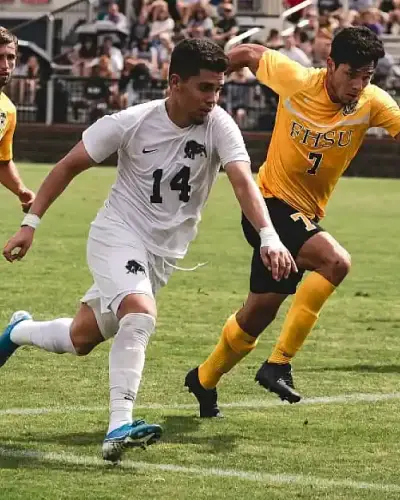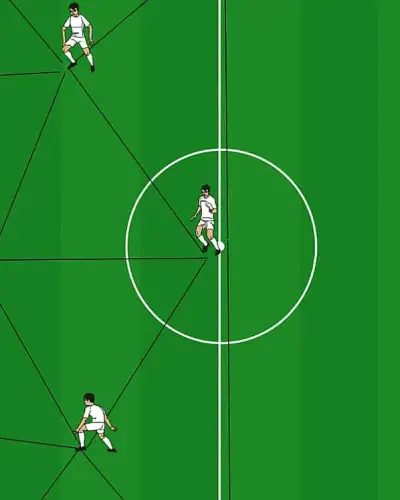Breaking the Press and What Comes Next?
"We don't want to just clear the ball—we want to play out from the back!" This is a statement many modern coaches emphasize, and it is often more than just a cliché. However, when the ideas on how to break the press are missing, the team struggles. In recent years, pressing has become a dominant defensive strategy, particularly in high and aggressive forms, making it essential for teams to develop structured approaches to playing through it.
To successfully bypass the opposition’s first pressing line—or even multiple lines—the entire team must follow a shared tactical idea. Achieving this requires proper positioning, balance between risk and security, and coordination among all players.
Why Every Player Is Involved
Imagine a team playing in a 4-3-3 or 3-5-2 setup with three central midfielders trying to progress the ball through midfield, while the opponent is pressing in a 4-4-2 or 3-4-3 with only two central midfielders. On paper, the attacking team has a numerical advantage (3 vs. 2) in central midfield, making ball progression easier.
However, if one of the midfielders positions himself in the cover shadow of an opponent or moves into an ineffective area (e.g., staying too deep without creating space), the numerical advantage is neutralized. This allows the defending team to close passing lanes, making central progression difficult.
How to Create Space and Open Passing Lanes
To effectively break the press, teams need a coordinated movement strategy:
- Pulling a midfielder wide to either open passing lanes centrally or overload the wing
- Center-backs dribbling forward in a back three to force a pressing trigger and disrupt defensive shape
Even after successfully bypassing the first pressing line, the team must decide what to do next. To effectively transition into an attacking phase, the key objective is to get a player in possession with an open body position facing the opponent’s goal. There are three main ways to achieve this:
1. Playing into Open Space Behind the Pressing Line
The simplest method is to pass into an open space behind the pressing line, whether through the center or wide areas. The key is to ensure that the receiving player has time and space to turn and continue the attack.
Often, a quick short pass followed by a layoff (wall pass) is used to draw a defender out of position, opening space for a progressive pass. Some coaches prefer to pass into areas "where the pressure is coming from," exploiting gaps left behind by pressing defenders.

2. The “Third-Man” Principle
If a direct pass into space isn’t possible due to a cover shadow, the team can use the third-man principle:
- Instead of passing directly into the target area, the ball is first played to a nearby teammate.
- That teammate quickly plays a one-touch pass into the intended space.
This movement manipulates the opponent’s defensive structure, allowing the ball to reach a free player in an advantageous position.

3. “Deep-Layoff” or “Wall Pass” Combination Play
Another common approach is the classic “Deep-Layoff” combination:
- A forward or advanced midfielder drops deep to receive a pass.
- Instead of turning, he immediately lays the ball off to a third teammate running forward.
This technique allows a team to quickly bypass multiple defensive lines and advance the ball into dangerous areas.

After Breaking the Press: What Next?
Once a team has successfully bypassed the first pressing line, multiple attacking options become available:

- Applying the same principles to break the next defensive line
- Through balls into the attacking channels
- Diagonal passes into space
- Switching play to the opposite flank to exploit gaps

Regardless of the method used, breaking the press should not be the final goal—it is simply the first step toward creating a structured attack. The key is to ensure that once the press is bypassed, the team has clear ideas on how to progress into a threatening position.






